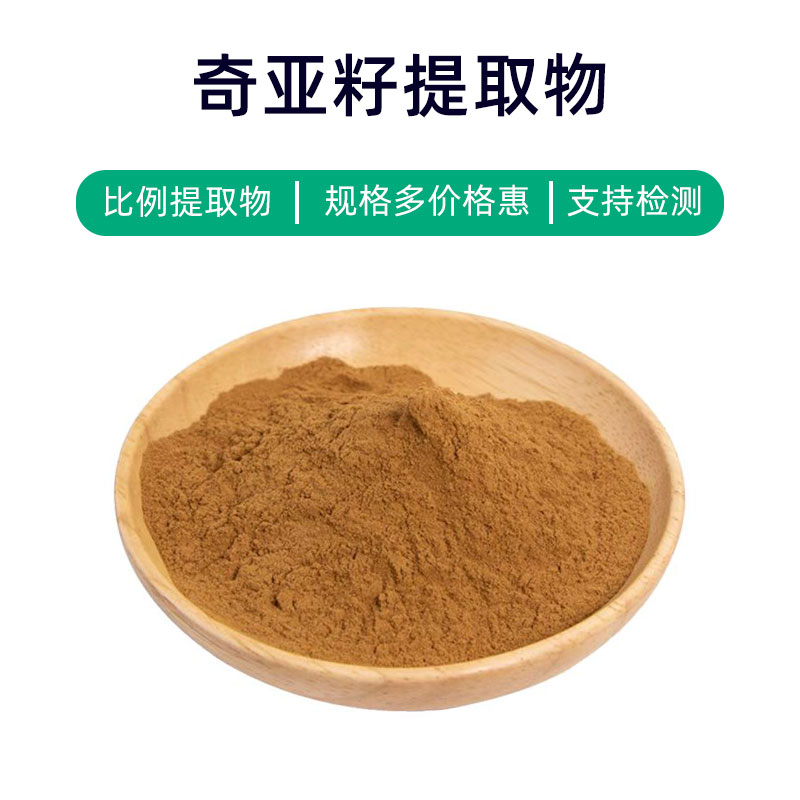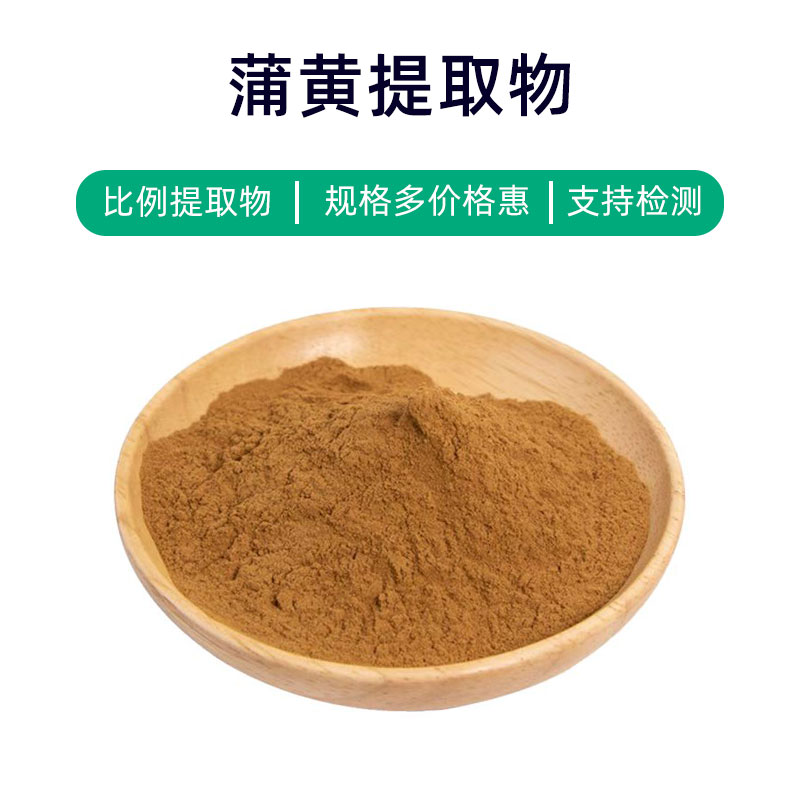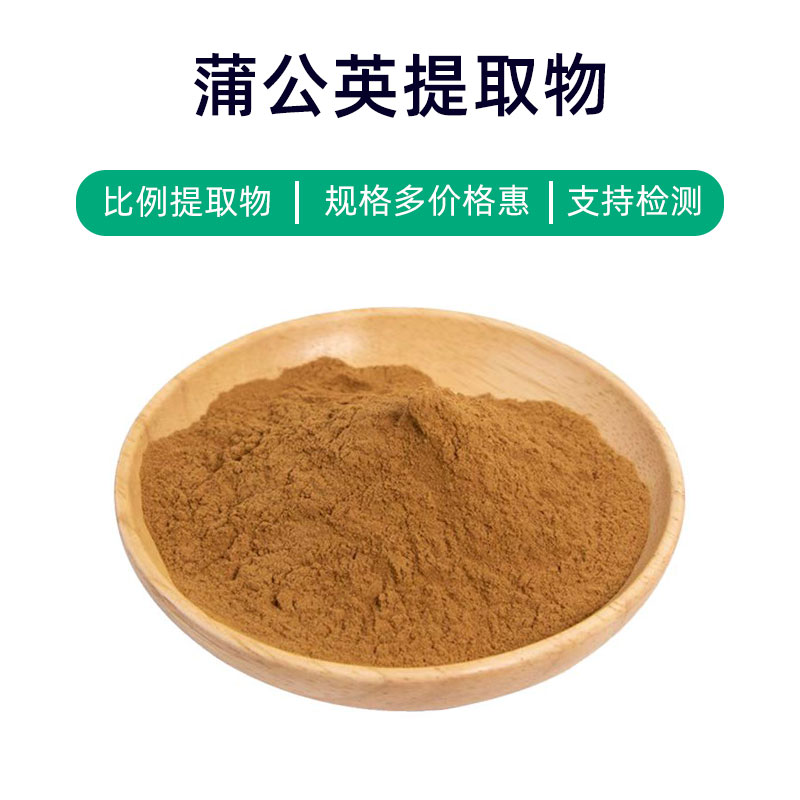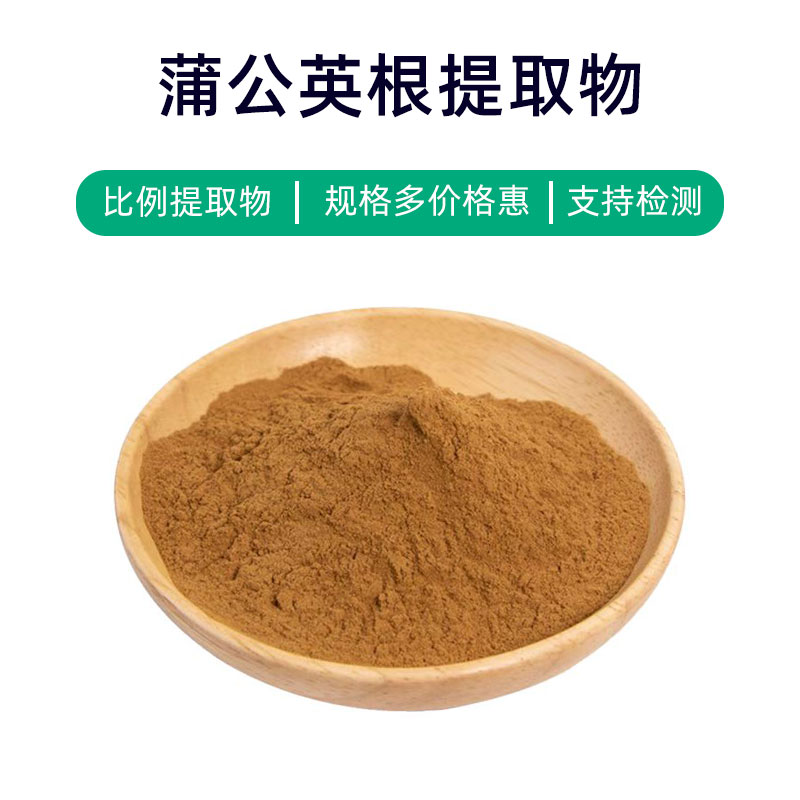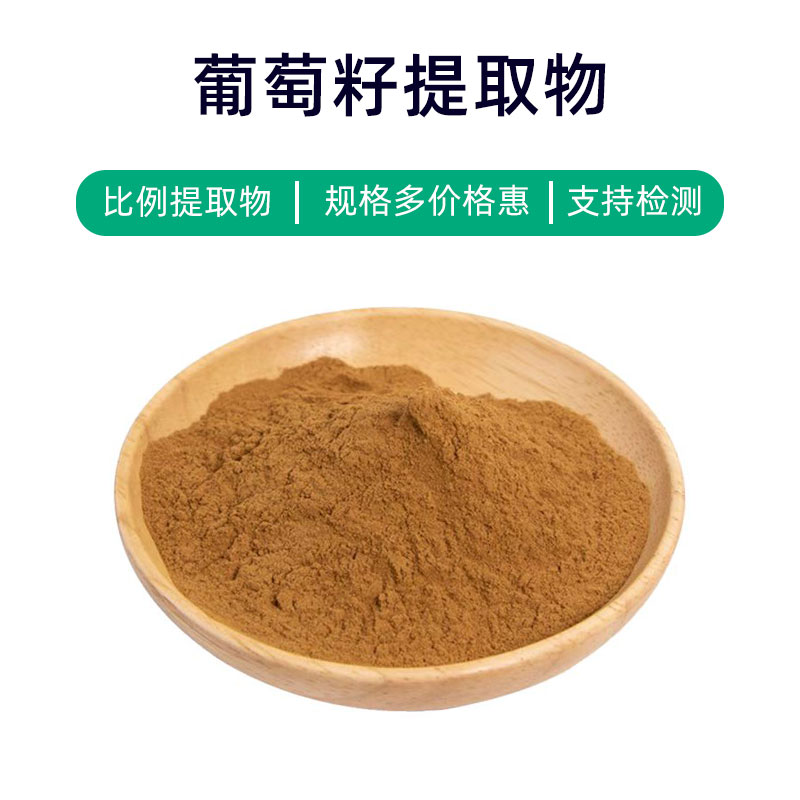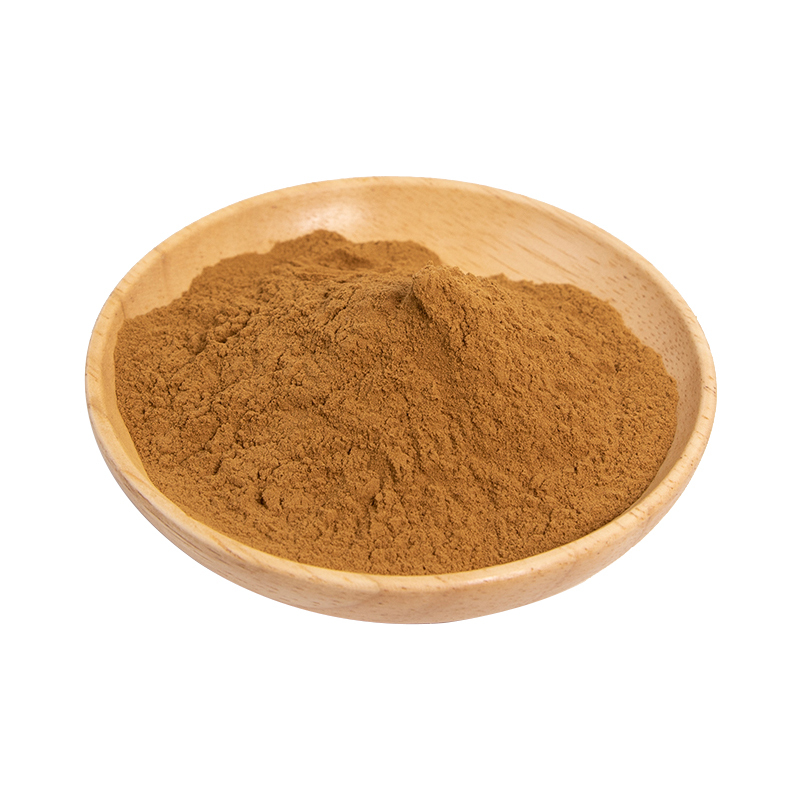Introduction to Polygonum Cuspidatum Extract
Polygonum cuspidatum extract is a natural plant extract derived from the stems and leaves of Polygonum cuspidatum, with key components including resveratrol, emodin, and paeoniflorin. These compounds provide the product with various effects and applications.
First, Polygonum cuspidatum extract exhibits exceptional antioxidant properties, capable of neutralizing free radicals in the body, slowing cellular aging, and protecting cells from oxidative stress damage. Second, it possesses anti-inflammatory effects that help alleviate inflammatory responses and discomfort caused by inflammation.
In the pharmaceutical field, Polygonum cuspidatum extract is commonly used to prepare health supplements and medicines to prevent and assist in treating chronic diseases such as cardiovascular issues and diabetes, as well as to modulate immune functions and enhance fatigue resistance.
In the cosmetics industry, Polygonum cuspidatum extract is widely used in skincare and anti-aging products, improving skin elasticity and firmness, reducing wrinkles and fine lines, and promoting a younger and healthier appearance.
Overall, Polygonum cuspidatum extract, as a natural plant extract, has expansive applications in both medical and cosmetics fields, making it an ideal choice for those seeking health and beauty benefits.
Production Process of Polygonum Cuspidatum Extract
The production process of Polygonum cuspidatum extract typically includes the following steps:
- Raw Material Preparation: Select high-quality Polygonum cuspidatum, perform initial washing and sorting to remove impurities and undesirable parts, ensuring raw material quality.
- Extraction Process: Crush or chop the cleaned Polygonum cuspidatum to increase surface area, followed by using an appropriate solvent (such as ethanol or water) for leaching or reflux extraction, allowing active compounds to fully dissolve into the solvent.
- Filtration and Concentration: Filter the extract to remove solid particles, then use evaporation or vacuum concentration methods to remove the solvent from the solution, obtaining a concentrated extract.
- Precipitation and Separation: Subject the concentrated extract to precipitation to settle impurities and insoluble substances, then perform centrifugation or filtration to obtain a purified extract.
- Drying and Milling: Dry the separated extract to remove residual moisture, then grind it into a fine powder or granular form.
- Quality Control: Conduct quality inspections of the extract, including testing for active ingredient content, microbes, and heavy metals, to ensure compliance with relevant quality standards and regulations.
- Packaging and Storage: Package the quality-approved extract in sealed containers, clearly labeling product name, components, production date, batch number, and other information. Store in a dry, cool, and light-protected space to ensure product stability and quality.
The aforementioned is a general production flow for Polygonum cuspidatum extract; individual manufacturers may adjust and optimize the process based on specific conditions and requirements.
Efficacy and Side Effects of Polygonum Cuspidatum Extract
Polygonum cuspidatum extract offers several beneficial effects, primarily including:
- Antioxidant Properties: It is rich in various natural antioxidants, such as polyphenols and flavonoids, that can neutralize free radicals, protecting cells from oxidative damage and delaying aging.
- Anti-inflammatory Properties: Studies show that the active components in Polygonum cuspidatum extract have significant anti-inflammatory effects, inhibiting the release of inflammatory mediators and alleviating conditions such as arthritis and intestinal inflammation.
- Antibacterial Properties: The extract contains several compounds with antibacterial activity that can inhibit the growth of bacteria, fungi, and viruses, proving effective in preventing and treating infectious diseases.
- Liver Protection: Research indicates that Polygonum cuspidatum extract has a protective effect on the liver, helping to reduce liver damage and promote regeneration of liver cells, thereby assisting in the treatment of liver ailments like liver damage and fatty liver.
- Blood Sugar Reduction: Some studies suggest that the extract may have blood-sugar-lowering effects, enhancing insulin secretion and improving glucose utilization by tissues, which is beneficial for blood sugar regulation.
- Circulation Improvement: Certain active components in the extract may dilate blood vessels and improve microcirculation, enhancing blood flow and lowering blood viscosity, which may benefit cardiovascular health.
- Anti-tumor Properties: Preliminary research suggests some compounds within the extract may inhibit tumor cell growth, providing potential in the prevention and adjunct treatment of certain tumors.
It is important to note that, despite the many benefits of Polygonum cuspidatum extract, there may also be side effects and risks, including allergic reactions and digestive discomfort. Therefore, consultation with a physician or professional before use is recommended, and proper dosage should be observed.
Application Scenarios and Dosage of Polygonum Cuspidatum Extract
Polygonum cuspidatum extract has widespread applications in the medical, food, and cosmetics fields. Here are detailed descriptions:
- Medical Applications:
- Used as a traditional Chinese medicine, it is often included in herbal preparations such as decoctions, granules, and pills for treating inflammatory and infectious diseases.
- In modern medicine, it is utilized in oral liquids, capsules, and other forms to regulate immune function, improve liver function, lower blood sugar, and lower lipid levels, aiding in chronic disease management.
- Food Applications:
- As a natural plant extract, it is added to functional foods, such as health supplements and functional beverages, to enhance the body's antioxidant capabilities and improve blood circulation.
- It can also serve as a food additive to enhance color, flavor, and nutritional value in products like beverages, jams, and candies.
- Cosmetic Applications:
- Due to its antioxidant and anti-inflammatory properties, it is commonly found in cosmetics like facial skincare products, body lotions, and masks to relieve skin inflammation, combat aging, and reduce dark spots.
- It is also used in hair care products like shampoos and conditioners to improve scalp inflammation, reduce dandruff, and promote hair growth.
Dosage:
- Medical Use: Follow the advice of a physician or qualified practitioner, with typical oral dosage being 5-10 grams per dose, 2-3 times daily.
- Food Use: Added according to product formulation, generally at a ratio of 1-5 grams of extract per 100 grams of food.
- Cosmetic Use: Incorporated per formulation specifications, usually at a concentration of 0.1-2% within the product.
It is crucial to adhere to the dosage guidelines on product packaging and avoid excessive use. Special populations, such as pregnant women, nursing mothers, and children, should use only under a physician's guidance.
Overview of the Source Plant of Polygonum Cuspidatum, Distribution, and Growth Environment
Polygonum cuspidatum (scientific name: Tadehagi triquetrum) is a common perennial herbaceous plant belonging to the legume family. Below is an overview of the source plant, its distribution, and growth environment:
- Source Plant:
Polygonum cuspidatum is a herbaceous plant characterized by its square stems and triangular leaves, hence its name "three-edged." It has small, beautiful flowers with a butterfly shape, typically colored in pale purple or pink. Its pod-shaped fruits contain multiple seeds. The root often contains rich bioactive compounds, widely used in the pharmaceutical and health sectors. - Distribution:
Originally native to southern China and Southeast Asia, including regions like South China, East China, and Central China, as well as countries like India, Myanmar, Vietnam, and Thailand. It is commonly found in tropical and subtropical areas, thriving in moist environments along field edges, grasslands, hillsides, and stream banks. - Growth Environment:
Polygonum cuspidatum prefers a relatively relaxed growth environment and is not particularly strict about soil requirements, although it favors fertile, well-drained sandy loam. It is commonly found in low hilly areas below 500 meters in elevation, thriving in sunny, moist settings. In conducive growth conditions, it grows rapidly, forming dense clusters.
Polygonum cuspidatum demonstrates wide adaptability in nature, making it not only an ornamental plant but also valuable for its rich medicinal properties, extensively harvested and utilized.
Processing and Storage of Polygonum Cuspidatum Extract
The processing of Polygonum cuspidatum extract generally involves the following steps: First, fresh Polygonum cuspidatum plants are collected, followed by initial cleaning and treatment to remove impurities. Next, the cleaned plant materials are ground or chopped to enhance extraction efficiency. Afterward, an appropriate solvent (such as ethanol or water) is used for extraction, typically employing methods like leaching or ultrasonic extraction. Finally, processing steps such as concentration, filtration, and drying yield the finished Polygonum cuspidatum extract.
For storage, it is advised to keep Polygonum cuspidatum extract in a cool, dry, ventilated area, away from direct sunlight and high temperatures to prevent moisture absorption and oxidation. It is best stored in a sealed container to minimize air exposure and extend its shelf life. Additionally, regular checks on the appearance and aroma of the extract are recommended to ensure its quality and stability.
Monica Sun is a seasoned expert in the plant extraction industry with over a decade of experience in research and production. She specializes in the extraction and purification of plant active ingredients, focusing on driving innovation in natural product applications. Monica has participated in the development of multiple functional plant extracts, delivering high-value natural raw material solutions for the health food, pharmaceutical, and dietary supplement sectors.









